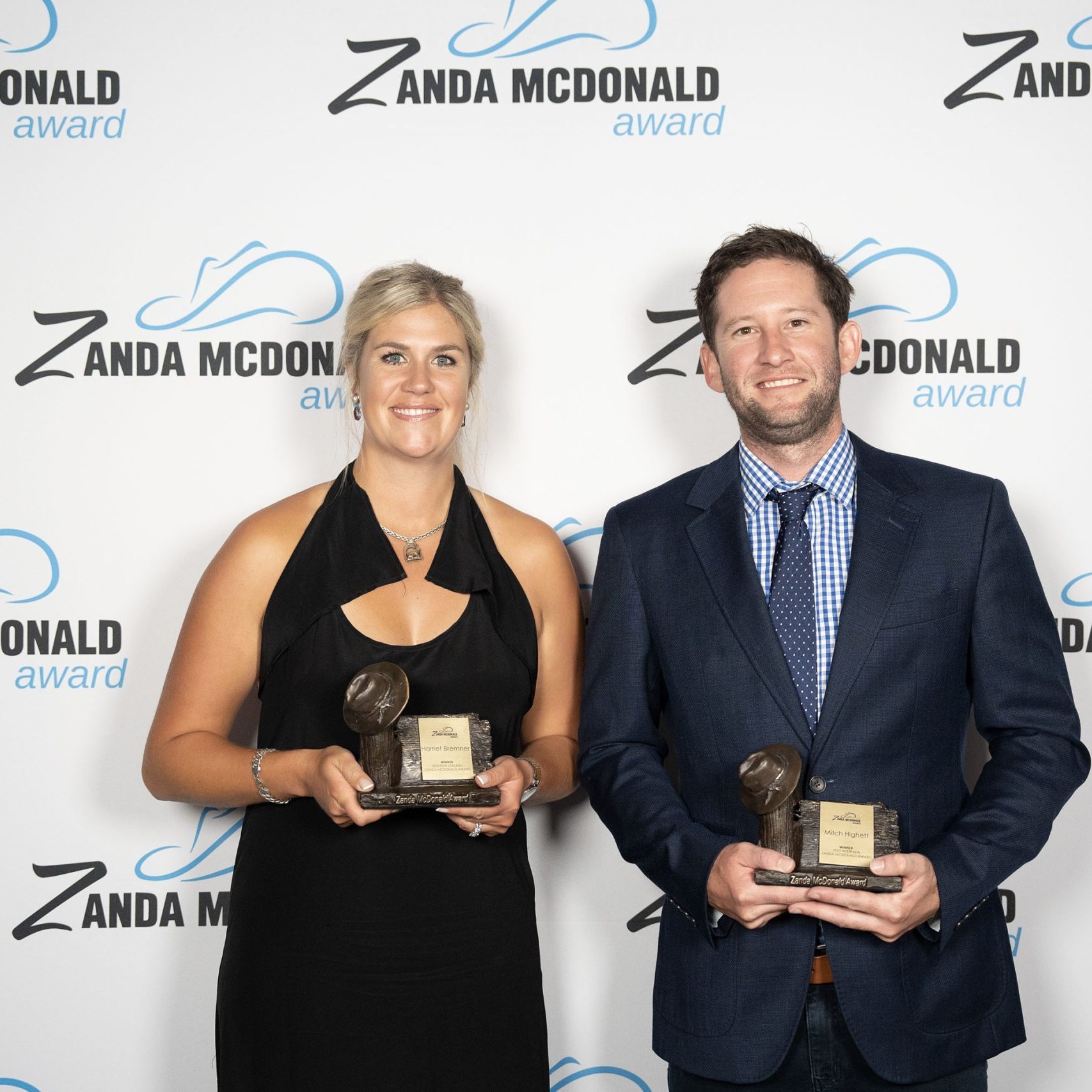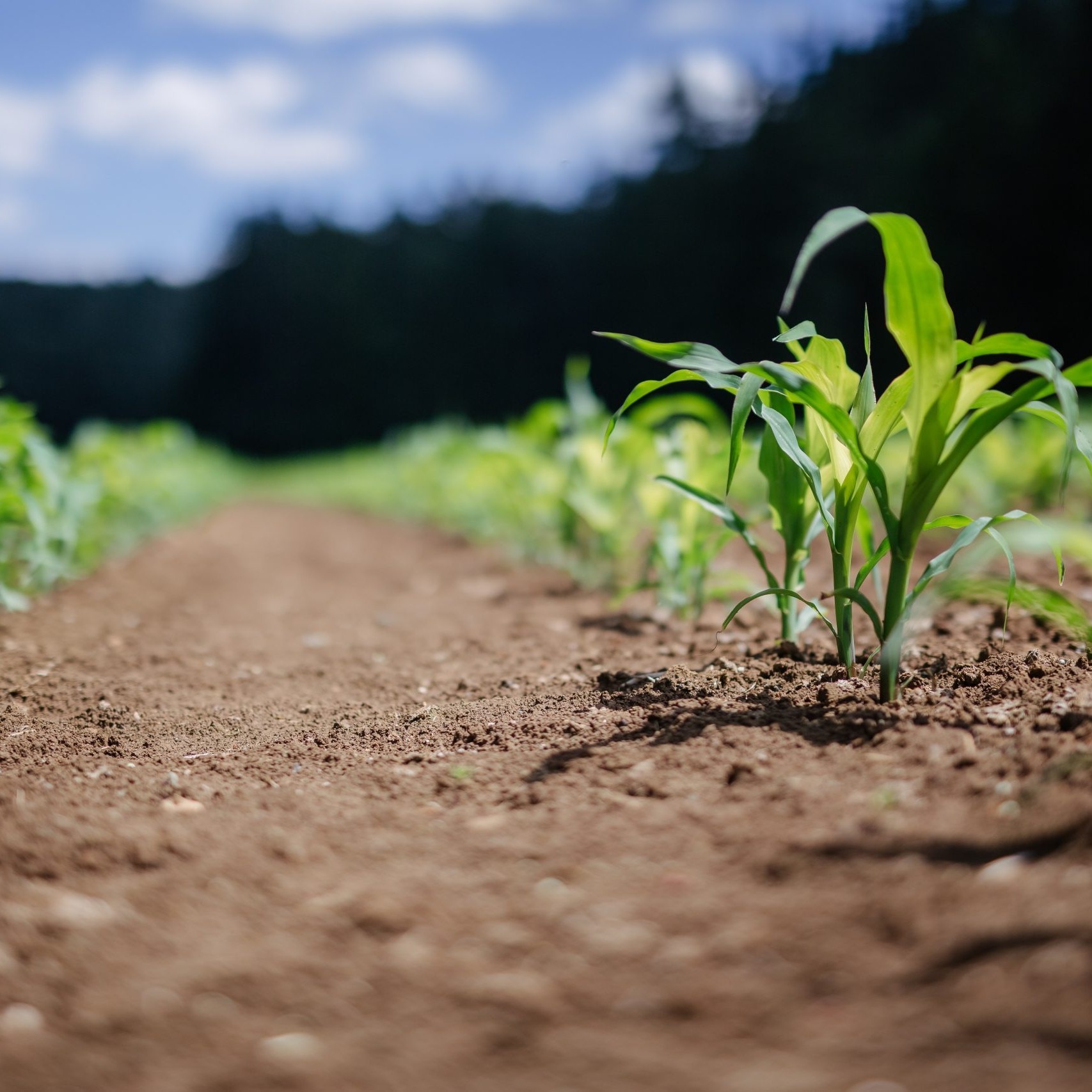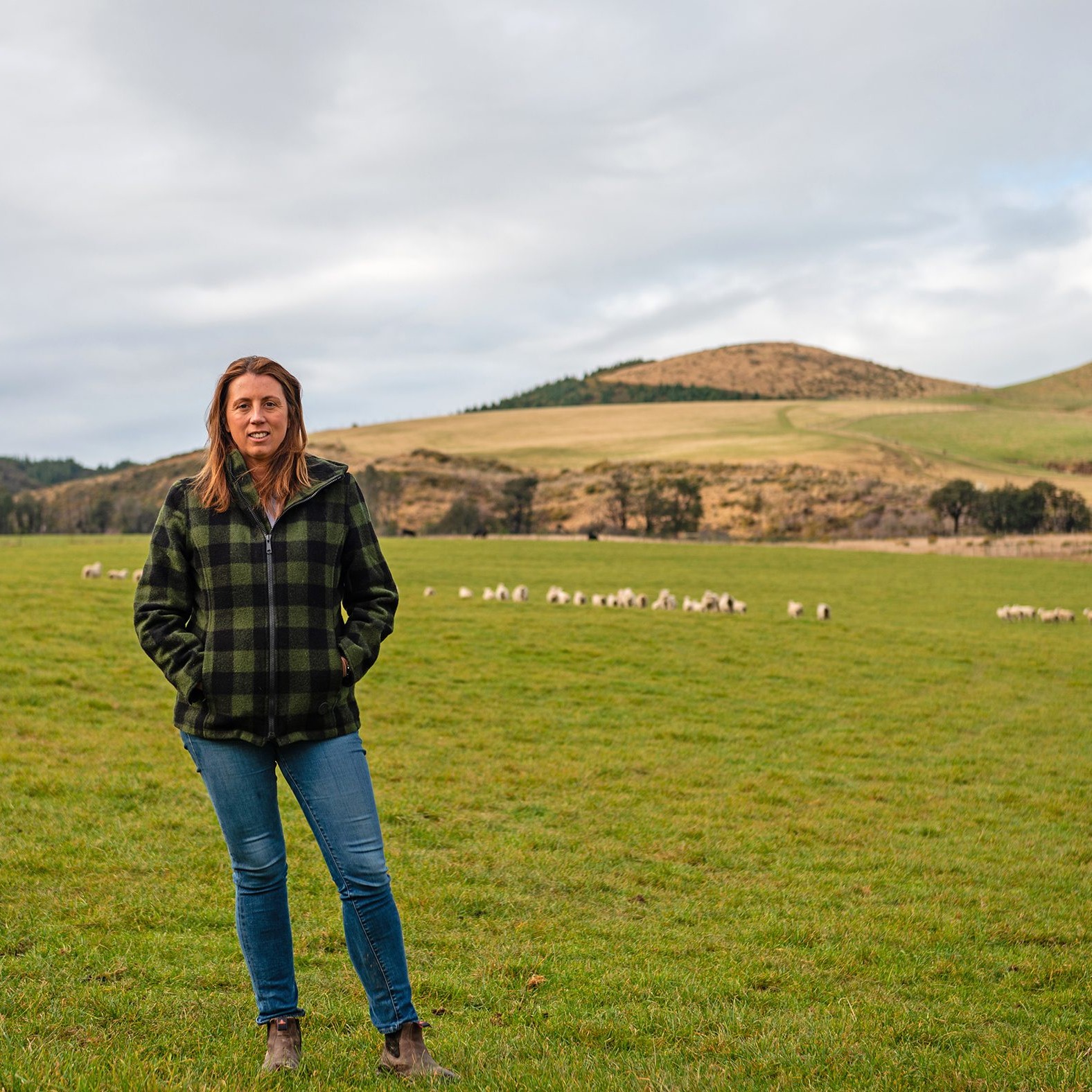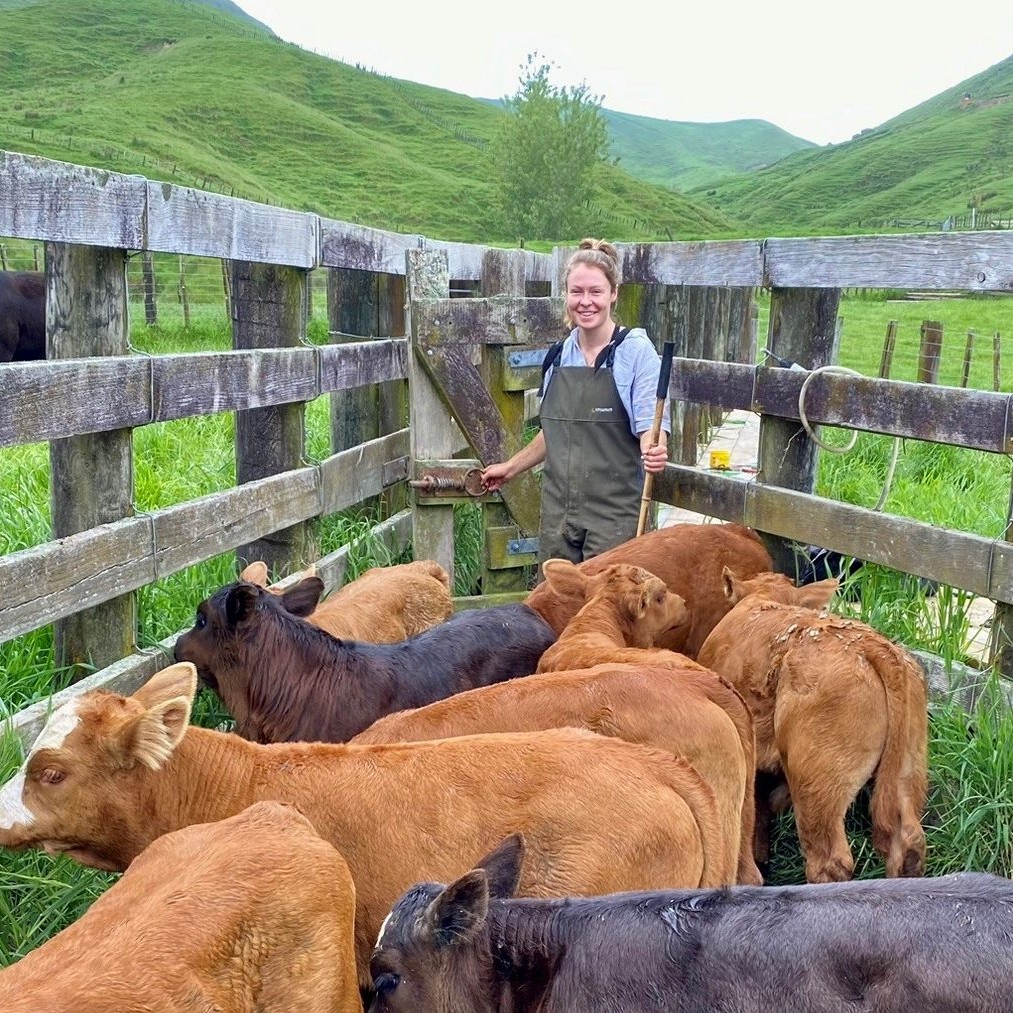Goats give Feilding saleyard drover Trudy Robertson a point of difference from rearing sheep and beef cattle. Cheyenne Nicholson reports.
A raffle prize was Manawatu local Trudy Robertson’s ticket into starting her own Hereford stud. Quite literally too, the raffle prize being a Hereford in calf Yearling Heifer.
The 27-year-old grew up in Feilding, Manawatu, on her parents’ South Devon Stud cattle farm. She was a regular at cattle shows all around the country and helped out both her parents, and her grandparents who had a Murray Grey stud.
Although farming and cattle were a big passion in her life, teaching was something else that struck a chord with her. But after a short stint at teachers’ college she soon made her way to Telford.
“I think in hindsight I probably chose the wrong degree to do and I didn’t end up enjoying it.”
Mid 2010 Trudy headed down to Telford to study Certificate in Agriculture followed by her diploma in Rural Business in 2012.
From there she headed to the vast plains of Canterbury to get stuck into the dairy industry.
“I got over dairy farming pretty quickly. I had a bad manager to end my dairy career so I came back to the Manawatu, did calf-rearing for a season. While I was doing that I started part time at the saleyards in Feilding.”
Now Trudy works part time at the saleyards as a drover. She mainly works the cattle section and shifts cattle into their pens in the mornings and after the sale as well as helping out with general maintenance around the yards. Alongside her job at the saleyards she works and does what she needs to on the farm owned by her partner Pete.
“The social aspect of the job is great and it’s pretty flexible which is good for me because I have to balance this with working on the farm.”
When Country-Wide caught up with Trudy she was in the midst of one of her busier times of the year with four sales in one week.
“We had our normal Monday boner/fat sale, Tuesday was a ram sale, Thursday was the IHC dairy beef sale and then the normal Friday store sale.”
November to May is their peak time with weaner fairs and in-calf dairy sales.
Back on the farm Trudy puts her hand to a bit of everything. Although a seemingly normal sheep and beef farm a few oddities make it a bit special.
The presence of goats add a twist to her and partner Pete’s farming operation. They inherited the goats from Pete’s sister who got them originally to supplement her kids’ high milk consumption. Once she moved to town Trudy and Pete were given the goats and left scratching their heads as to what to do with them.
“I thought the milk might be good to help my eczema but it was a pain to pasteurise it in such small quantities. I decided one year to rear some lambs and calves on it and it worked well.”
Now they run the goats as a micro dairy farm, taking the kids off at a few days old after they get their colostrum off mum then they are bottle fed. At the same time as they are kidding they are lambing as well.
“Any lambs that need to be bottle-fed are popped on to the goats’ milk. We had 60 sets of triplets this year so the ones we took off all got goats’ milk.”
She also has eight calves being reared off goats’ milk. Now into their second year using goats’ milk they are seeing good results. Although they haven’t done any official measuring or weighing to see the benefit Trudy uses eye appraisal to keep tabs on the calves and lambs on goats’ milk.
“This year Pete’s hand-rearing some calves on milk powder. You can’t really tell the difference between his lot and my lot on goats’ milk. We’ve found they transition well on to the goats’ milk. It’s basically whole milk on to whole milk even though the milk’s composed slightly differently.”
The farm is split into the main 380-acre farm which Pete’s mum lives on and the 10-acre lifestyle block he and Trudy live on.
The farm features lots of native bush and plantations and runs about 400 ewes and 70 of last year’s calves that have been reared for fattening stock.
Trudy runs her own small Hereford stud and what’s left of her Dexter stud.
“The Dexters are on their way out. I started them really as a hobby but we end up with too many bulls and too many different mobs having them and the Herefords. It’s simpler and more economical to keep the Herefords.”
Pete has come on board with the Herefords having bought a bunch of commercial stock so Trudy’s bull has more ladies to keep him occupied.
The Hereford stud didn’t come about in the usual way of making a pointed decision to buy stock. Trudy won her first-ever Hereford heifer in a raffle at the Manawatu Country Living Expo. Awhea Amethyst 002 was the first prize which started Trudy off on this new venture.
Her long-term plan for the stud is to build numbers to about 30 and enter into the commercial space. Although Beef Expo is questionable territory right now Trudy is hopeful the national sale will continue and hopes to get one bull into the national sale at some point.
“I want to get the quality of my stock up. They aren’t too bad right now but coming from the stud world I’m quite fussy. I started with about six animals and culled them back to two and have built my numbers up again.”
Trudy isn’t looking for a big rangy animal when she’s looking at a Hereford. She prefers the traditional modest-sized animal with traditional colouring and good structure.
“To me a Hereford shouldn’t be as big as a South Devon and if they are then they are too big in my book.”
She has some work to do on the colouring and is aiming to get better pigment around the eyes but one area she is winning is the size department. Her bull she has now is close to her ideal. His progeny have been coming out at about 32kg birth weight.
“I’ve never had birth weights like that before. Although he’s smaller build he has fantastic muscling and that’s really what I want – low birth weights with good growth and good muscle. I want my animals to be above breed average for growth.”
Trudy only buys a new bull every three or so years. With small numbers a new bull every year doesn’t make a lot of sense genetically or financially. In the off years Trudy road trips to Hereford sales within reasonable distance to scout what animals and breeders she likes so she knows who to target when she’s in the market for new genetics.
To keep track of her progress and gauge if she’s getting it right with her breeding Trudy is still active in the cattle showing scene.
“It’s a good way of knowing whether you’re getting it right structurally. I want to keep showing and one day if we have kids get them involved as well. It’s a great thing to be part of and I really enjoyed it when I was growing up.”
Trudy was heavily involved in cattle showing growing up, competing in numerous events and taking out many handler classes. In 2010- she won the Beef Ambassador award at the Future Beef competition held at Beef Expo each year. She’s a big believer in the Future Beef programme and hopes to donate a steer each year for one competitor to use for the competition.
When it comes to long-term plans Trudy is happy to play it by ear. She jokes that she probably put a spanner in the works for partner Pete’s farming plans when she moved in and brought her cattle with her but they aren’t ruling out anything or risking getting tunnel vision by having specific goals.
“We have some mini goals in mind but we are open to opportunities that come our way. Whether that’s leasing my parents’ farm when they are ready to step back or even expanding Pete’s farm here.”




